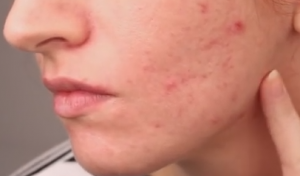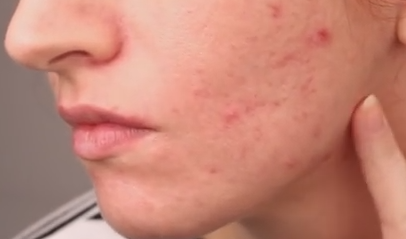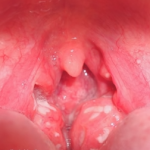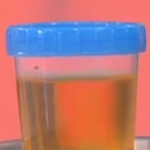Red non-itchy spots on skin may be harmless or they may be a symptom of some serious underlying condition. Such spots are often accompanied by additional symptoms such as swelling, fluid-filled bumps, and/or pain. However, even if red spots do not itch, change color or appearance, or elicit any other symptoms, it is best to consult a doctor as such spots may be malignant.
Causes of red spots on skin not itchy
Some of the common causes of red spots on skin that do not itch are listed below:
- Birthmarks: Also termed as hemangioma, birthmarks are congenital pigmented or red non-itchy spots on skin. They may also form after birth in childhood. In most cases, birthmarks have associations with blood vessels.
- Acne: Also called macules, acne are brown or red spots or flat bumps on skin that may or may not itch. A macule usually refers to the scar that remain post healing of acne. Such marks are temporary and disappear after some time. However, recovery can be delayed due to prolonged sun exposure.
- Dermatofibromas: These spots often appear as solid, tiny, brown or red bumps on skin. They may or may not cause itchiness. Typically affecting the torso and legs, dermatofibromas are caused due to ‘fibroblasts’ soft tissue buildup. They do not itch; but consult a doctor if the spots cause pain or itch.
- Petechiae/blood spots: The condition is caused due to vigorous coughing, trauma, etc. which lead to bleeding of the capillaries into the skin’s mucous membrane. Such bleeding are visible as purplish or red non-itchy spots on skin. Petechiae typically affects the legs first and then transfers to other parts of the body.
- Pyogenic granulomas: Often affecting children, pyogenic granulomas occurs due to blood capillaries overgrowth, which in turn may occur due to injury or trauma that damage the blood vessels. Buildup of numerous blood vessels is what causes the formation of red spots on skin that do not itch. Such spots may also be brown, purple, or blue in color. Even though the exact cause is unknown, the condition is not inherited nor is it malignant.
- Lyme disease: It is caused due to infection by Borrelia burgdorferi bacteria which pass into humans via the bite of ticks living in forested or grassy areas. The tick bite may leave a tiny red bump on the skin, which develops into a reddish bull’s-eye like rash after some days. Spread of the infection can cause multiple rashes featuring itchy/non-itchy red spots on skin. Additional symptoms of Lyme disease include joint pain, fever, and flu-like signs. The condition can be cured completely if treated during the initial phases of the illness.
- Cherry angioma: It is a harmless condition marked by spontaneous formation of large purplish or red spots on skin that do not itch. If the spots become bigger, then they may turn blue in color. The condition runs in the family, can affect people of all age groups, and may occur on the face as well as anywhere else on the body. Treatment options include electro-surgery, cryosurgery, intense pulsed light, or pulsed dye laser.
- Heat rash: It is one of the most common causes of red spots on skin that may or may not itch. Also called prickly heat rash or sweat rash, heat rashes are caused due to trapping of sweat below the skin surface due to clogged sweat ducts. Trigger factors include increased sweating, wearing tight clothes, excessive creases on skin, and prolonged sun exposure, etc.
- Hives: They are raised, smooth wheals on skin. The wheals or red spots on skin tend to differ greatly in size and can grow anywhere between 2 mm to 3 inches or more. Hives tend to quickly change in position and size and are often itchy. Drug allergies, bee stings, etc., commonly cause the onset of hives, and people with a genetic predisposition to hives are most susceptible.
- Measles: It is a very contagious condition caused due to infection by virus. In the initial stages, Koplik’s spots or white-grayish spots form within the oral cavity and after a few days itchy/non-itchy red spots develop on the skin. Additional symptoms include fatigue, fever, sore throat, and tearing, etc. The first symptoms usually occur a 7 or more days after infection.
- Rosacea: It is a chronic inflammatory condition marked by formation of tiny reddish pus-filled bumps and/or red dots on skin. Often the red spots occur in groups making the face appear flushed. The condition typically affects adults, runs in the family, and has no known cure. Treatments are aimed at alleviating the symptoms.
- Folliculitis: This common skin rash is marked by formation of red spots or bumps near the hair follicles. It can affect any area of the body with hair growth. Folliculitis rash typically spreads due to bacterial infection. The red spots may or may not itch.
- Diaper rash: The condition causes small itchy/non-itchy red spots in the diaper area of a baby. It can get triggered due to varied factors such as diet, moisture from the diapers, infections, allergy, or as a side effect of antibiotics. In most cases, the rash involves burning and stinging sensations that are predominantly felt by the baby during a diaper change.
- Insect bites: Bites from insects such as mosquitoes, ant, lice, bed bugs, flea, and mites can also cause red spots on skin that may or may not itch. Sometimes, the bites can cause a lot of pain and even trigger bad allergic reactions.

Treatment of red spots on skin not itchy
As discussed above, red spots on skin can occur due to a variety of causes. Hence, there is no generalized treatment. Instead each case is treated as per standard treatment procedures after diagnosis of the underlying cause.
Mild cases of non-itchy red spots on skin can be treated with home remedies. However, patients need to know the cause of the rashes before opting for home remedies.
- Application of natural aloe vera juice can help soothe the inflammation associated with heat rash. Ice packs are also helpful.
- Taking a long oatmeal bath helps ease most rashes with red non-itchy spots on skin
- Keeping the diaper area clean and dry for a few days can help alleviate the problem. If the rash persists then visit a doctor.
- People who have recently developed red spots that do not itch need to check if they have made any recent changes of soaps, cosmetics, and, detergents, etc. The rashes may be an allergic reaction to such items.



Admiring your post and info input on this article. I came across your blog by accident as i was looking for something to red about red dot spot. My husband has a kind dot but also not itchy and super tiny. He said its a good luck.
Just think positive I guess.